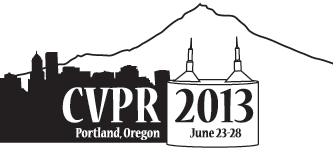-
No-reference Harmony-Guided Quality Assessment
AbstractColor harmony of simple color patterns has been widely studied for color design. Rules defined then by psychological experiments have been applied to derive image aesthetic scores, or to re-colorize pictures. But what is harmonious or not in an image? What can the human eye perceive disharmonious? Extensive research has been done in the context of quality assessment to define what is visible or not in images and videos. Techniques based on human visual system models use signal masking to define visibility thresholds. Based on results in both fields, we present a harmony quality assessment method to assess what is harmonious or not in an image. Color rules are used to detect what part of images are disharmonious, and visual masking is applied to estimate to what extent an image area can be perceived disharmonious. The output perceptual harmony quality map and scores can be used in a photo editing framework to guide the user getting the best artistic effects. Results show that the harmony maps reflect what a user perceives and that the score is correlated to the artistic intent.
Related Material
[pdf][bibtex]@InProceedings{Chamaret_2013_CVPR_Workshops,
author = {Chamaret, Christel and Urban, Fabrice},
title = {No-reference Harmony-Guided Quality Assessment},
booktitle = {Proceedings of the IEEE Conference on Computer Vision and Pattern Recognition (CVPR) Workshops},
month = {June},
year = {2013}
}
These CVPR 2013 workshop papers are the Open Access versions, provided by the Computer Vision Foundation.
Except for the watermark, they are identical to the accepted versions; the final published version of the proceedings is available on IEEE Xplore.
Except for the watermark, they are identical to the accepted versions; the final published version of the proceedings is available on IEEE Xplore.
This material is presented to ensure timely dissemination of scholarly and technical work.
Copyright and all rights therein are retained by authors or by other copyright holders.
All persons copying this information are expected to adhere to the terms and constraints invoked by each author's copyright.

